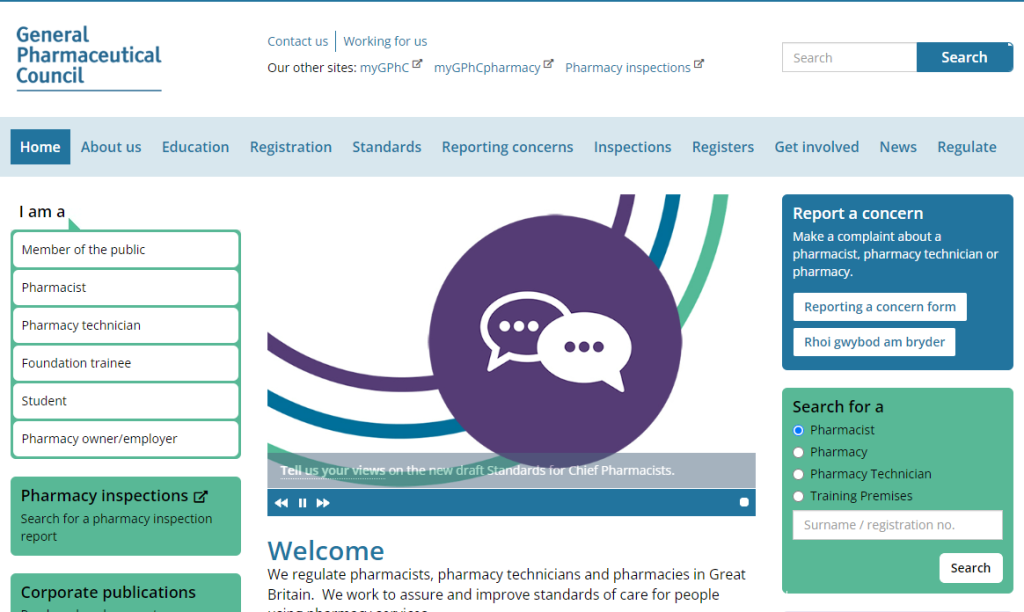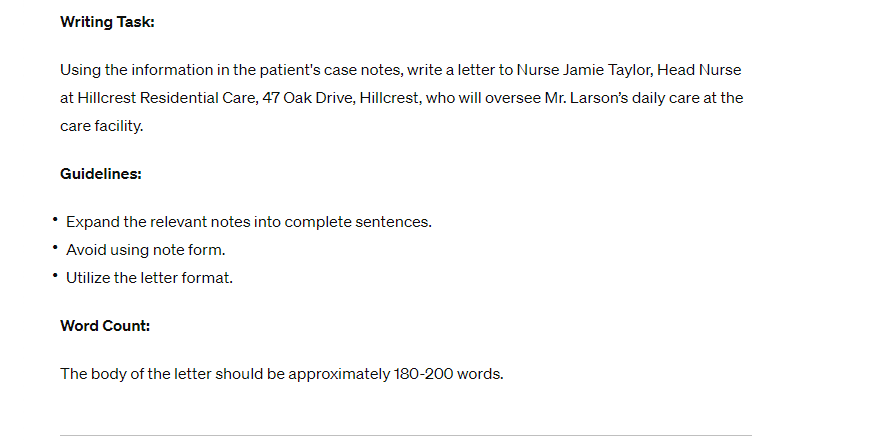The Occupational English Test (OET) is a crucial exam for healthcare professionals aiming to work in English-speaking environments. Writing effectively in the OET is essential for demonstrating your ability to communicate in a medical context.
Decoding OET Medicine Writing Criteria
The OET Medicine writing sub-test is designed to evaluate a candidate’s ability to write medical letters, such as referrals, discharge summaries, or advice letters, which are integral to professional medical communication. The key evaluation criteria include:
- Accuracy of Medical Information: This involves ensuring that all medical details, including patient history, diagnosis, and treatment plans, are not only relevant but also accurately represented. It’s crucial to avoid any factual errors that could compromise patient care or professional integrity.
- Clarity and Precision: The information must be conveyed in a clear, straightforward manner. This means avoiding ambiguous language and ensuring that the intended message is easily understood. Medical writing should be direct and precise, leaving no room for misinterpretation.
- Professional Tone and Style: The tone of the letter should be appropriately formal and respectful, reflecting the seriousness and professionalism of the medical field. It should also be empathetic, considering the sensitive nature of health-related communication.
- Organizational Structure: The letter should have a clear and logical structure, typically starting with an introduction to the patient’s situation, followed by detailed information in the body, and concluding with specific recommendations or next steps. This structure helps ensure that the reader can easily follow and understand the key points.
- Language Proficiency: Proficiency in grammar, vocabulary, and punctuation is essential. Proper language use not only reflects the writer’s professionalism but also ensures the clarity and readability of the letter.
Crafting Clear and Concise Medical Letters
In medical writing, the ability to communicate effectively while being concise is highly valued. This involves:
- Choosing Pertinent Medical Details: Focus on including only the most relevant information. This means selecting details that are directly related to the patient’s current condition, treatment plan, and necessary advice or recommendations. Extraneous information should be omitted to maintain clarity and relevance.
Practical Tips for Effective OET Medicine Writing
Mastering OET Medicine writing requires a blend of understanding criteria and practical application. Here’s how you can enhance your skills:
Enhancing Language Proficiency for Healthcare Settings
Medical writing demands precision and clarity. Understanding and correctly using medical terminology is crucial. This not only involves familiarizing yourself with technical terms but also understanding their practical application in patient care scenarios. Reading medical journals and case studies is an excellent way to grasp the formal style of medical writing. Additionally, using phrases and terminology common in real-life medical settings ensures your writing is both authentic and professional.
Developing a Logical Flow in Writing
The ability to present information in a clear, logical sequence is key in medical writing. This includes outlining your letter with a clear structure: starting with patient identification, followed by the reason for writing, clinical history, current treatment, and concluding with a specific request or recommendation. Each paragraph should address a single idea to maintain coherence. Utilizing transitional phrases helps in connecting different parts of your letter, guiding the reader through your narrative.
Addressing Different Healthcare Scenarios
Practicing writing for various medical scenarios is vital. This helps in adapting your writing style to different contexts, such as emergency referrals, chronic illness management, or patient education. After writing, it’s important to seek feedback from peers or mentors and critically review your letters to identify areas for improvement. Simulating real-life situations in your practice, considering factors like time constraints and information availability, can better prepare you for the actual test conditions.
Common Pitfalls in OET Writing for Medicine and How to Avoid Them
Awareness of common mistakes in OET writing is crucial for achieving success in the test. Here are some key areas to focus on:
Technical Aspects of Language Use
- Grammar, Punctuation, and Spelling: These elements are fundamental in medical writing. Errors in grammar, punctuation, and spelling can significantly impact the clarity and professionalism of your letter. Remember that while perfection isn’t expected, frequent errors can negatively affect your scores.
Grammar and Vocabulary Considerations
- Articles Usage: A common mistake is the incorrect use of articles (“a,” “an,” and “the”). In medical contexts, this can be challenging as many nouns can be both countable and uncountable. For example, “treatment” can be countable when referring to specific actions but uncountable when used in an abstract sense.
- Age Description: When describing a patient’s age, use “years old” for stating the age and “year old” as an adjective before a noun. For instance, “Mrs. X is 33 years old” versus “Mrs. X is a 33-year-old patient”.
Avoiding Common Errors
- Overuse of Technical Jargon: While medical terminology is important, its overuse can lead to confusion. Ensure your letter is easily understandable to someone who might not have specialized knowledge in your specific area of medicine.
- Lengthy Sentences and Lack of Coherence: Avoid packing too much information into one paragraph. Each paragraph should address a single aspect of the task, ensuring effective and efficient communication.
- Relevance of Information: Ensure that the information you include is directly relevant to the purpose of the letter. Avoid starting with irrelevant medical history unless it’s crucial to the current situation.
- Proper Patient Referencing: When referring to patients, use appropriate titles and avoid informal references like “the patient.” For children, using first names is acceptable.
- Clinical Language: Avoid using judgmental language or non-specific adjectives. Instead, use clinical and factual language. For example, instead of saying “Mr. Thomas is an alcoholic,” specify the quantity of alcohol consumption.
- Clarity of Purpose: Make the purpose of your letter clear and concise. Ambiguity in the purpose can lead to misunderstandings and inefficiencies.
- Academic Language: Avoid using academic-style words like “Moreover” and “Furthermore.” Instead, opt for more professional alternatives like “However” and “In addition”.
- Final Request Clarity: Ensure that your letter’s conclusion clearly states any required actions or follow-ups, avoiding vague endings.
- Consistency in Language and Tense: Consistency in using British or American English and in tense usage, especially when discussing current symptoms, is important. Stick to one style throughout the letter.
Being mindful of these pitfalls and actively working to avoid them can significantly enhance your writing performance in the OET for medicine.
Resources for OET Writing Preparation
Preparing for the OET writing test requires utilizing a range of resources that are specifically designed to help candidates understand the test’s format and expectations.
Utilizing Sample Letters and Practice Tests
- Understanding Expectations: Sample letters and practice tests offer insights into what is expected in the OET writing test. They serve as benchmarks for the level of detail, clarity, and professionalism required.
- Analyzing Structure and Wording: By reviewing these samples, you can learn how effective medical letters are structured. This includes understanding how to begin a letter, how information is organized, and how to conclude effectively.
- Practice Under Exam Conditions: Using practice tests allows you to simulate the test environment. This helps in building familiarity with the test format and time management skills, which are crucial for success on the actual test day.
Continuous Learning and Practice
- Regular Practice: Consistent writing practice is key to mastering the skills required for the OET. This involves writing sample letters and getting accustomed to the types of scenarios presented in the test.
- Seeking Feedback: Obtaining feedback on your practice letters from teachers, mentors, or peers is invaluable. Constructive criticism helps in identifying areas for improvement and in refining your writing skills.
- Iterative Learning Process: The process of preparing for the OET writing test is iterative. It involves writing, receiving feedback, learning from mistakes, and improving over time. This ongoing cycle enhances both your language skills and your ability to communicate effectively in a medical context.
Staying Informed: OET Exam Dates
Staying informed about the OET exam dates is crucial for effective preparation and planning. Being aware of the scheduled dates for the OET in 2024 allows you to strategically plan your study schedule, ensuring that you allocate sufficient time for each aspect of the test, including the writing component. Additionally, it’s important to be mindful of the key registration deadlines and procedures. Understanding these timelines ensures that you are well-prepared and can avoid any last-minute complications, leading to a smoother test-taking experience.









Leave a Reply